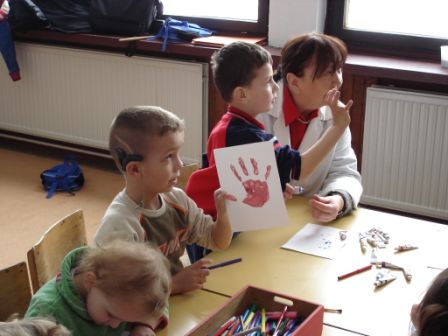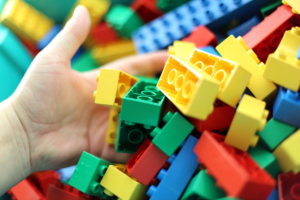
Noise and a poor sound environment can hinder linguistic development of nursery school children, says Doctor of Philosophy Elina Niemitalo-Haapola in her dissertation. According to the study, more attention should be paid to children’s sound and learning environments.
While working as a speech therapist, Elina Niemitalo-Haapola went to kindergartens, schools and homes to find out how different sound and listening environments are in childrens’ everyday lives.

“There is an important linguistic developmental phase during the time spent in day-care centres, where children learn language and perceive their interaction environment. Everyday observations inspired me to explore the importance of the learning environment in the language learning process.”
According to Niemitalo-Haapola’s doctoral dissertation, an inadequate sound environment has a significant impact on the handling of hearing information. This includes; the ability to separate speech features such as sounds, tones and intonations. This can still be reflected in understanding the hearing and learning new words.
Previous studies also support the results obtained. A poor learning environment may increase the risk of linguistic challenges, increase stress levels, and enhance the impact of other risk factors.
Noise is harmful regardless of age
Noise significantly influences how children hear and understand information regardless of their age. As children grow older, they are able to compensate for the disadvantages of their linguistic skills, but the processing itself is just as sensitive. The problem lies in the fact that a small children cannot articulate why concentration is difficult in some situations or that they feel tired because of noise.
The adult is able to address the effects of the noise into words and tell about their feelings. Children experience the sound environment equally strongly, but are unlikely to be able to describe these experiences by themselves.
Adults play an important role in enabling children to work quietly. Although children is unable to tell the shortcomings of their sound environment, nurses and parents can interpret a range of signals.
When there is a lot of noise around, people naturally raise their voice to make themselves heard. If you often notice loud behaviour from children at home, it may mean high noise levels in the nursery. Nursery teachers can also suffer vocal fatigue.
Niemitalo-Haapola points out that day care centres and schools should not only be good learning environments for children. They should also be good working environments for teachers and early educators.
Right to good learning and listening conditions
Niemitalo-Haapola stresses the sound environment challenges can be solved by a combination of functional and pedagogical means including structural and acoustic changes.
For example, children can be divided into different groups and spaces according to their activities. It is advisable to reserve time for play and relaxation, so that the noise can also be restored. The spaces and surfaces are a lot to do: it sounds very different whether Lego blocks are poured onto a hard wood surface or a soft carpet,
says Niemitalo-Haapola.
In learning environments, you should invest in soft, sound-absorbing surfaces. Attempts can be made to reduce the noise disturbance from other activities and areas by closing the door openings.
According to Niemitalo-Haapola, the most important thing is to increase the understanding that good sound conditions are not just an aesthetic or luxurious element but an essential part of children’s everyday life and learning. Children of all ages should be provided with quality learning environments.
It is important that children are not placed in an unequal position on the premises. By providing good sound environments, we create optimal learning conditions for children.
Some concluding findings:
This thesis provides new information on the feasibility of the multi-feature paradigm, developmental changes on ERP (Event related potential) morphology, and effects of noise on CAP (Central auditory processing) in children. Based on the results of the study, it can be concluded that:
- The multi-feature paradigm with syllable stimuli and novel sounds is a feasible and time-efficient means to study sound encoding and workload needed for memory representation forming as well as pre-attentive auditory discrimination of several speech sound features and attention shifting processes reflected by ERPs in toddlers
- The deviant-type specific MMN characteristics might reflect different underlying neural processes of pre-attentive auditory discrimination for different sound changes
- The developmental changes in the timing, magnitude, and amplitude distribution of ERPs suggest maturational changes in the timing and neural mechanisms of CAP
- Even mild background noise hinders sound encoding, increases the neural workload needed for memory representation forming, and degrades auditory discrimination, all essential for language development, at the ages of 2 and 4 years
- The auditory discrimination of some speech sound changes is more vulnerable to noise than the others
Source: Niemitalo-Haapola, Elina: Developmental and noise-induced changes in central nervous system hearing information at the age of two and four years. University of Oulu, 2017. The full paper can be read here.
The original article in Finnish is written by Eveliina Miettunen of Ground Communications and is available here.


